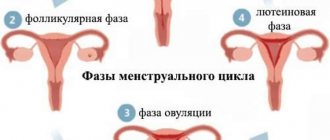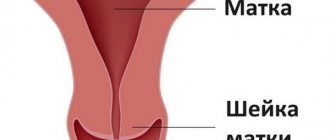Pregnancy with twins carries not only joy, but also enormous responsibility, because carrying two babies at once, twins or twins, is a serious burden on the body of the expectant mother. Today such a situation is not so rare. In approximately 0.7-1.5% of cases, twin pregnancies are noted. In case of multiple pregnancy, a woman requires special attention from medical personnel due to possible complications. Only doctors can take into account the peculiarities of twin pregnancy and properly monitor the patient’s condition.
What is twin pregnancy?
This is the name of one of the types of multiple pregnancies (MP), when not one, but two fetuses develop in a woman’s sac. There may be more of them - triplets, quadruplets, etc. When carrying two fetuses, early diagnosis is very important so that in the future the woman’s condition will be under the strict supervision of a doctor. Based on the number of fertilized eggs, multiple births can be identical or fraternal. In the first case, the children are called twins, and in the second, twins.
Fraternal twins
This type of twin pregnancy is more common, in about 70% of cases. It occurs when two eggs mature in a woman’s body at the same time (in the ovary or ovaries), which are then fertilized by different sperm during one or two sexual acts, provided that no more than a week has passed between them. In this case, two isolated embryos are formed. These twins are called dizygotic or fraternal, and popularly called fraternal twins. They have only general similarities, like between brothers and sisters. Children rarely have the same sex; more often they are born different.
Such a twin pregnancy can only be bichorionic biamniotic (otherwise known as diamniotic dichorionic). It is characterized by the fact that:
- Each baby has its own sac with amniotic fluid (fetal bladder);
- each fetus has its own chorion (hereinafter referred to as the placenta);
- Dizygotic twins have 2 sets of membranes that surround the amniotic sac (the inner layer of the amnion and the outer layer of the chorion).
Identical twins
If a non-identical pregnancy with twins can only be bichorionic biamniotic, then an identical (monozygotic) pregnancy has several types depending on the time when the egg divided. This happens after fertilization. The following types of monozygotic MB are distinguished:
- Monozygous bichorionic biamniotic. Occurs in approximately 1/3 of cases. The division of the egg occurs as it moves through the tube to the uterus. This is the period during the first three days after fertilization.
- Monozygotic monochorionic biamniotic. Occurs when the egg divides from 3 to 8 days after conception. In this case, 2 embryos are formed: each has its own amnion (fetal bladder), but they have a common chorion. This type of connection is typical for every 360 case. Because they share the same placenta, such twins are at risk.
- Monozygotic monochorionic monoamniotic. Occurs in every 2400 cases. Separation occurs 8-13 days after conception. In this situation, the embryos share a common amniotic sac (amnion) and a common placenta (chorion). Such a twin pregnancy is considered the most unfavorable. Monoamniotic twins are at risk of death due to possible tangling of the umbilical cords during the growth of the babies.
- Siamese twins. Appear when separation occurs later than the 13th day after conception. Children can fuse their tailbones, skull bones, lumbar spine or chest.
Classification of multiple births
There are two types of multiple births.
Polyzygotic
Polyzygotic (or dizygotic, non-identical) multiple pregnancy occurs when two or more eggs in a woman's body ovulate and are subsequently fertilized. As a result, babies of the same or different sexes are born, having approximately 50% of common genetic characteristics (that is, just like ordinary blood brothers and sisters).
Fraternal twins can even look very different from each other. So, two twin girls, Lisa and Masha, went to the kindergarten where I once worked as a teacher. Their mother was Russian, and their father was Uzbek. And what’s surprising: one of the sisters was black-haired and dark-skinned with a typically Asian face, but the second was born light-skinned blonde with blue eyes.
Fraternal twins can be different genders and are not exact copies of each other.
Each polyzygotic twin has its own aqueous membrane (amnion), chorion (villous membrane) and placenta. They are also called bichorionic or biamniotic polyzygotic twins. The frequency of such multiple births is approximately 66% of cases.
Each fraternal twin has its own placenta, aqueous membrane, and villous membrane.
The process of ovulation and subsequent fertilization of eggs may have its own nuances:
- Eggs are released from different follicles of one or both ovaries. In this case, fertilization occurs approximately simultaneously
- It is extremely rare for several eggs to ovulate in the same follicle. They are also fertilized at the same time.
- The second egg ovulates and is fertilized some time after the first - against the background of an already developing pregnancy (the difference usually does not exceed a week).
- Several eggs matured in one cycle can be fertilized by the sperm of different sexual partners.
Monozygotic
A more rare case (33%) is the splitting of one fertilized egg. As a result, two fetuses are formed (sometimes more), which are genetically absolutely identical. These babies are always same-sex, have the same facial features (an exact copy of each other), physiological characteristics, mental abilities, temperament, psychology, etc. Brothers or sisters even have an identical arrangement and shape of teeth, and in childhood they get sick almost simultaneously. It is well known that twins are connected by an inextricable emotional bond (this is not surprising, because they were originally one fertilized egg).
Identical twins are absolutely identical at the genetic level, because they were once a single organism
Interestingly, the formation of monozygotic twins largely depends on the specific period at which the separation of the fertilized egg occurred:
- First 72 hours. The inner layer of zygote cells has not yet been formed, and the outer one has not changed either. Therefore, two chorions are formed with two separate amniotic cavities (bichorionic or biamniotic monozygotic twins). In this case, the placenta can be common or two separate ones are formed.
- The first 4–8 days. During this period, the inner cell layer is already formed and the chorion is formed. However, the amniotic membranes have not yet formed, so the embryos will develop in separate amniotic cavities (water sacs). Such twins are already called monoamniotic, monochorionic monozygotic twins.
- After 13 days. The division of the fertilized egg at such late stages will be only partial. After all, the embryonic disc is already formed. As a result, an anomaly will arise - children will be born, fused with each other.
If a woman is pregnant with triplets (or there are even more fetuses in her uterus), then monozygosity and polyzygosity are often combined in different combinations. For example, two identical twins and one identical twin may be born.
Video: why twins are born (Elena Malysheva’s TV program “Life is Great!”)
Causes of multiple pregnancy
The main reasons for the birth of twins are the maturation of several eggs at once in one uterus or the division of the zygote into two parts after fertilization. Particular factors for the occurrence of multiple pregnancy are:
- Genetic predisposition. Heredity has a high degree of influence. When spouses in a relationship have had twins, they are also more likely to have twins.
- Age. During premenopause (up to 35 years), ovulation does not occur in every menstrual cycle. They alternate with ovulatory ones, when a surge of hormones occurs. If ovulation occurs after this, then 2 or more eggs mature.
- Hormonal contraception. The abolition of such drugs leads to the activation of the synthesis of one’s own hormones, which leads to the maturation of several eggs.
- In vitro fertilization (IVF). Thanks to modern reproductive technologies, in case of infertility, conception can be artificially stimulated. A woman is given up to 4 eggs, which increases the likelihood of twins.
- Birth of twins from a previous pregnancy. If a woman is pregnant again, she has a greater chance of having twins.
Signs of twin pregnancy
A woman may suspect she is pregnant with twins at an early stage. The test shows a positive result the first time. This unusual condition is also determined by the following signs:
- Toxicosis in twins. It starts earlier and lasts longer, until about 16-17 weeks. The woman's health is more difficult. Toxicosis is accompanied by vomiting and increased fatigue.
- Rapid weight gain for the expectant mother. Body weight increases much faster from the first weeks, which is why a woman needs to strictly monitor her diet.
- Belly with twins. Due to the growth of two babies at once, it begins to increase earlier. By the 12th week, the size of the uterus almost reaches the navel (with a singleton it only protrudes slightly above the womb). Due to the close presentation of the fetuses, the woman feels movement earlier.
- Preeclampsia and anemia. In case of multiple pregnancy, these conditions are diagnosed in half of the cases. This is due to an increase in the volume of circulating blood and plasma. To prevent anemia, iron supplements are prescribed.
- Swelling and shortness of breath. Due to the high load on all organs, it is difficult to carry twins without complications. Displacement of the diaphragm disrupts the functioning of the lungs, causing shortness of breath, swelling, and fatigue. Due to the heavy load, the risk of varicose veins is high.
When can you find out about twins?
Fifteen to twenty years ago, people learned about twins only during childbirth or not earlier than the 20th week of pregnancy. When recognizing a multiple pregnancy, the following signs were taken into account.
The enlargement of the uterus during multiple pregnancy occurs faster than during pregnancy with one fetus, so the size of the uterus does not correspond to the duration of pregnancy. At the same time, the significant volume of the pregnant uterus does not correspond to the small size of the presenting fetal head. In addition, with twins, a deepening of the area of the uterine fundus (saddle-shaped uterus) can be detected, the formation of which is associated with protrusion of the corners of the uterus by large parts of the fetus; as well as a longitudinal depression on the anterior wall of the uterus if the twins are in a longitudinal position, or the presence of a horizontal groove on the anterior wall of the uterus if the twins are in a transverse position. For a long time, it was important for the diagnosis of twins to clearly identify three or more large parts of the fetus in the uterus during an obstetric examination (two heads and one pelvic end or two pelvic ends and one head). Of equal importance was the presence of two distinct heartbeat points in different places of the uterus.
Today, an ultrasound examination as early as the 5th week of pregnancy can tell the expectant mother how many babies she can expect. At the same time, the doctor on the screen identifies two “bubbles” of nascent life. It is interesting that such a finding for a woman who was hesitant between whether or not to have an abortion, in almost 100% of cases, inclines the expectant mother to continue the pregnancy. An experienced doctor up to 14 weeks of pregnancy can determine the type of twins (monozygotic or dizygotic) by the thickness of the septum between the “bubbles”.
To diagnose multiple pregnancies, phonocardiography is also used, with which it is possible to record the heart sounds of twins not only in the last months of pregnancy, but also at 20-22 weeks and earlier.
How is twin pregnancy diagnosed?
There are several methods and signs that help identify multiple births. The doctor can determine it already during a gynecological examination, but in addition the woman is prescribed several procedures:
- Blood analysis. It is necessary to determine the presence of human chorionic gonadotropin. This hormone is secreted by the placenta.
- Ultrasonography. This method is more informative only from the 8th week of gestation. Ultrasound in the early stages does not always detect twins, because one fetus can hide behind the other.
When examined by a gynecologist in the early stages
During the initial examination, the doctor may note several signs of multiple pregnancy. The gynecologist palpates the soft uterus - in this case, he notes the discrepancy between its size and the delay in menstruation. Other signs that the doctor notes if multiple births are suspected:
- beating of 2 hearts during diagnosis by the Doppler system;
- inflated AFP blood test results;
- discrepancy between the size of the head and the volume of the abdomen;
- too rapid weight gain;
- persistent constipation;
- severe swelling of the legs;
- excessive fatigue of a woman;
- severe toxicosis and gestosis in the early stages;
- high blood pressure.
HCG indicators in a blood test
An hCG test can confirm the doctor’s hypothesis. This indicator has specific values for each week. If after analysis it turns out that the hCG level is too high for a certain stage of pregnancy, then this may indicate multiple pregnancy. But this sign is indirect. High levels of hCG are characteristic of certain abnormalities in fetal development and ectopic pregnancy. In addition, this method cannot determine how many fetuses are in the uterus, whether they have one amniotic sac and placenta or several.
Ultrasound diagnostics
The first ultrasound is possible at 4-5 weeks, literally immediately after a missed period. It does not guarantee confirmation of multiple pregnancy, because one child can hide behind another, but in most cases it confirms the doctor’s assumptions. Further routine ultrasounds help the doctor determine how many placentas there are, the presence of a septum (one or two amnions), the location and heartbeat of the fetuses, signs of developmental delays, and fusion between twins.
Development of twins by week of pregnancy
Women pregnant with twins are at increased risk, so they need special monitoring from doctors. To do this, you have to visit the antenatal clinic more often: every 14 days until 28 weeks, and then every 7-10 days. The gynecologist pays special attention to the woman’s weight during each examination. By the time of birth, a woman in labor should gain no more than 15 kg. Every extra kilogram increases the risk of complications during fetal development. In each trimester of pregnancy with twins, there are characteristic features that are always noted by the doctor.
1-10 week
Early on, a woman’s body begins to react to a twin pregnancy. This is manifested by swelling of the mammary glands and an increase in hCG levels. By the 8th week, embryos can already be detected on ultrasound - their size reaches 3 cm. The symptoms are the same as those characteristic of multiple pregnancy, but toxicosis appears earlier. By 10-11 weeks, future babies are approaching the end of embryonic development:
- their length is about 4.5 cm;
- hearts are formed;
- the weight of the embryos is about 5 g;
- the voice-forming apparatus begins to form;
- The faces are visible, the heads are very large.
10-20 week
During this period, rapid growth of both fetuses occurs, due to which the uterus greatly increases in size and leaves the pelvic area. This condition requires a woman to wear special clothes for expectant mothers. At week 16, during an ultrasound, you can already distinguish the sex of the babies and roughly calculate their weight. Other features of the development of twins at this stage:
- babies can clench their hands into fists, they show facial expressions, but they sleep almost all the time;
- children react to sounds;
- the rudiments of the organs of the digestive and excretory system appear, the intestines begin to work;
- the baby can swallow a certain amount of amniotic fluid and remove waste products through the bladder;
- from the 16th week, the baby’s movements are felt, from the 20th week it is already felt very clearly;
- The body length of babies is about 17 cm, and their body weight is 200 g.
20-30 week
At the next stage, women experience a significant acceleration of metabolism, and stretch marks appear due to the rapidly growing uterus. The struggle of babies in the womb for the correct position leads to constant tremors. The woman's back begins to hurt again. Inconvenience is caused by increased urination, increased fatigue, lower back pain and severe swelling. Other features of fetal development according to the twin pregnancy calendar:
- by week 25, fetal growth is 30 cm and weight is about 700 g;
- in appearance, babies are already more similar to newborns; an ultrasound may reveal that one is larger than the other;
- by 28 weeks, babies are already viable and have a higher chance of survival in case of premature birth compared to premature babies;
- by week 30, growth is about 35 cm, and the formation of the body is almost completely completed.
30-40 week
This stage is one of the most important. In the final trimester, the bone skeleton is formed in babies, the pancreas develops, and iron and calcium accumulate. The head and body become approximately the same size, so children look proportional. A large belly makes it difficult for a woman to sleep. In this case, it is recommended to lie on your left side; it is better to purchase a pregnancy pillow for this.
During this period, a woman should limit physical activity and devote more time to rest. At week 36, the woman in labor is scheduled to be hospitalized. Babies during this period are considered fully term:
- the sucking apparatus has been formed;
- height reaches 45-50 cm;
- weight is about 2.2-3 kg.
Recommendations
During pregnancy, you need to be sensitive to all manifestations, and especially with twins. But there is no need to strain too much, otherwise you can “earn” neurosis, and stress and negative emotions have a bad effect on the course of pregnancy. If fatigue and anxiety are more pronounced than usual, bed rest may be necessary. If there are threats of interruption, you will be asked to lie down for “save.”
What the doctor recommends cannot be ignored during pregnancy, especially if twins are expected:
- stay in nature. But if you are prone to allergic reactions, then it is better to choose open places to relax. Do not forget about protection against ticks, wear clothes made of natural fabric with long sleeves;
- walking in the fresh air, especially in the evening;
- You can’t sunbathe in the sun, but you shouldn’t completely isolate yourself from ultraviolet radiation. You need to dose out sunbathing, go outside in the morning or evening;
- walk or travel far from home only with a guide, especially in the late stages of pregnancy, because labor can begin at any moment. It is recommended to take personal and medical documents with you;
- visiting the pool will reduce the load on the pubic area. Don't swim alone;
- do not lift weights, this can cause a miscarriage;
- posture control. The doctor will teach you how to bend over correctly to avoid curvature of the spine. The spinal column is already overloaded during pregnancy, and even more so with twins. This will help relieve lower back pain, and after delivery, avoid problems with the musculoskeletal system;
- get a good night's sleep. Be sure to lie down during the day, but maintain relative physical activity, unless there are contraindications and bed rest is not prescribed;
- You should not steam in baths, saunas, or take thermal procedures;
- swimming in open water can lead to infection of the genital organs and complications of pregnancy;
- monitor weight gain, control blood pressure, swelling;
- seek help at the slightest suspicion or the appearance of unpleasant or unusual symptoms that were not warned about.
Particular attention should be paid to nutrition. When carrying twins, the female body needs more nutrients, proteins, fats, carbohydrates. But this does not mean that you need to consume double the amount of food, it just needs to be of better quality and a regimen will be required.
The daily calorie requirement when carrying twins is up to 3500. To compare, a pregnant woman with an only child needs 3000 kcal, with triplets - about 4500. To make it easier to breathe and an overfilled stomach does not prop up the diaphragm, portions should be small, but the frequency of intake should be increased so that sufficient minerals were supplied.
Features of carrying twins
The process of bearing twins depends not only on the type of multiple pregnancy, but also on the woman’s medical history. Many factors are taken into account here - whether the patient is giving birth for the first time or for the second time, what method of delivery took place last time. Separately, it is worth noting pregnancy after artificial insemination, i.e. IVF when the possibility of multiple births is high. Each case has its own characteristics of carrying twins.
After caesarean section
If the previous birth took place via cesarean section, the next one may have serious complications. Here we can distinguish two scenarios:
- If there is a defective scar on the uterus, doctors may insist on artificial termination of pregnancy. Even if twins develop normally, it is still dangerous.
- If, after a cesarean section, a woman has a scar on her uterus, then gestation is extended to 30 weeks. Then surgical delivery occurs. This is necessary to exclude possible uterine rupture and other negative consequences.
Pregnancy with twins after IVF
In this case, twins are explained by the fact that of the embryos that the doctor implants into the uterine cavity, two can implant into the uterine layer at once, and not just one. They attach and successfully continue development. In rare cases and only at the request of the woman, specialists artificially remove implanted embryos. In some cases, this may be necessary for health reasons. According to statistics, twins are born in 30% of IVF cases. The high percentage is explained by the fact that several embryos are implanted into a woman to increase her chances of becoming pregnant.
Predisposition factors
The occurrence of twin pregnancy can be facilitated by:
- heredity - the presence of twins in relatives of partners or one of them. More common across generations. Moreover, the relatives may not be close – first cousins or second cousins;
- during pregnancy occurring after 35 years of age - the older the woman giving birth, the higher the chances;
- at the end of taking COCs, the ovaries begin to actively produce hormones, which is why several zygotes can form;
- hormonal stimulation during IVF - more than one artificially grown embryo is transported into the uterus. If two eggs are detected during pregnancy, then one can be removed if desired (resorption);
- history of several births. According to statistics, during the fourth pregnancy, every third woman in labor is diagnosed with multiple births (the so-called parity of pregnancy).
Delivery during multiple pregnancy
Carrying twins differs in terms and characteristics of the course. In this case, doctors pay special attention to the woman’s health, inviting them to appointments more often. People are admitted to the hospital for a certain period before the scheduled date of birth. By this point, the babies are fully formed, even though their weight and height are slightly below normal. If necessary, they are immediately sent to intensive care.
When can twins be born?
A peculiarity of multiple pregnancy is that women rarely reach the usual period of 38-42 weeks. Patients carrying twins often give birth at about 36 weeks. For this reason, women are hospitalized at least 14 days before the expected date of birth. In general, the favorable period for the birth of twins is 36-38 weeks. The peculiarity is that twins have a longer adaptation period than one baby. For this reason, even if born prematurely, they can breathe on their own.
Natural childbirth
Delivery tactics are determined taking into account several factors. The doctor takes into account the position and presentation of the fetuses, especially the first baby. No less important are the regularity and intensity of contractions, the presence of water and intrauterine hypoxia of twins, the age of the woman in labor and possible gynecological diseases. Natural childbirth is used if:
- both fetuses are presented with their heads;
- the condition of the babies and mother is satisfactory;
- labor activity is regular.
Natural childbirth in most cases proceeds normally without any abnormalities, but can sometimes be accompanied by some complications:
- weak labor due to a distended uterus;
- premature rupture of amniotic fluid or placental abruption after the birth of the first fetus;
- fetal hypoxia;
- bleeding;
- prolapse of the umbilical cord.
Indications for abdominal delivery
In case of multiple pregnancy, doctors often do not take risks and resort to abdominal delivery, i.e. caesarean section. The undeniable indications for elective surgery are:
- extragenital diseases;
- unprepared birth canal for childbirth after 38 weeks;
- age of the first-time mother;
- pelvic or transverse position of the first fetus;
- complications during pregnancy with twins;
- severe gestosis;
- excessive distension of the uterus;
- large babies;
- polyhydramnios.
Features of the course, possible complications
Multiple pregnancy is considered more difficult for the expectant mother and is considered high risk. There is an opinion among doctors that this is almost a pathological condition. In such cases, the load on the body is much greater than when only one life is growing in the tummy. Almost immediately, shortness of breath, heartburn and constipation begin to torment, and the urge to urinate becomes more frequent. More than 4 times more often (in comparison with one embryo) the diagnosis of “gestosis”, the so-called late toxicosis, is made. It can only be dealt with while in a medical facility, so there is a high rate of multiple mothers ending up in hospital for conservation.
All this affects the fact that the body’s resources are quickly depleted, and therefore there are more threats of various complications and the likelihood of their occurrence is higher.
Among the dangers for the mother are the occurrence of anemia, abnormal breech presentation of the fetus(es), premature onset of labor, polyhydramnios, placental abruption and/or placental presentation. There is always a risk of miscarriage and the need for premature termination, in other words, abortion.
Toddlers have a high degree of developmental anomalies and are more likely to be born premature and/or with low birth weight. They also talk about the possibility of intrauterine death of one of the two, which can lead to big problems for the health of the second. For example, to cerebral ischemia, which will lead to serious neurological disorders in the future.
The 30th week of pregnancy with twins is considered the reference period. From now on, it is mandatory to undergo weekly examinations with cardiotocography and Doppler ultrasound. These procedures help monitor the condition of the offspring. If the slightest deviations from the normal development of the fetus are detected, the mother is immediately hospitalized.
Right now it is recommended to go on maternity leave and begin active preparation for childbirth. Be prepared for the fact that if you are planning a replenishment of 4 babies, then at 30-32 weeks they will be born.
Possible risks and complications
Carrying twins is a serious challenge for a woman. The risk of complications in such patients is higher compared to a singleton pregnancy. Possible consequences are classified depending on the time of occurrence. They can be:
- intrauterine;
- perinatal;
- postpartum.
Specific intrauterine complications
This category of consequences appears even during pregnancy with twins, when the babies develop. Specific intrauterine defects include:
- reverse arterial perfusion;
- threat of miscarriage;
- fusion of children (Siamese twins);
- a chromosomal disease in one of the babies;
- feto-fetal blood transfusion syndrome;
- congenital “deformity” of one of the babies;
- anembryony – the phenomenon of the death of one of the twins;
- antenatal death of one fetus.
Perinatal
Complications with multiple pregnancy may occur during delivery. Mortality rates are high here - about 5 times higher compared to carrying a single fetus. Other serious complications during the perinatal period are:
- hypoxia of one or two fetuses;
- slow dilatation of the cervix;
- anomaly of labor;
- premature placental abruption (especially for the second baby);
- bleeding during separation of the placenta.
Postpartum risks for mother and twins
Due to the high risk of complications, twin pregnancy is considered a borderline state between normal and pathological. Even after childbirth, mother and babies are at risk. A woman is at high risk of bleeding, inflammation of the uterine cavity (endometritis), or slow contraction of the uterus (subinvolution). The woman in labor is observed for another 2 hours after birth. If necessary, uterine contractions are administered.









